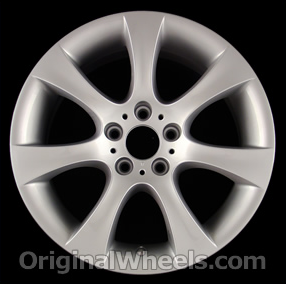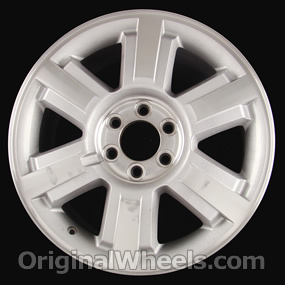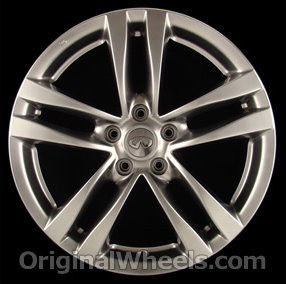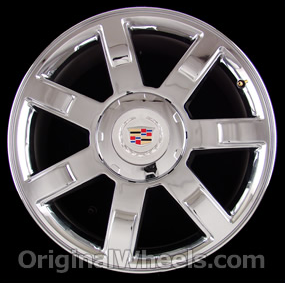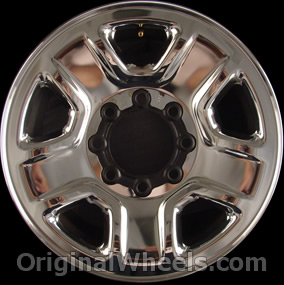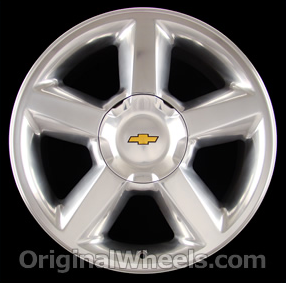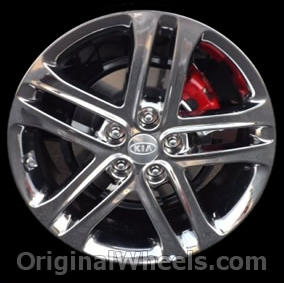A List of the Most Common Wheel Finishes!
If you’ve ever looked at our website, chances are you’ve noticed that there are quite a few different OEM wheel finishes. We have our standard silver and polished, but what about ones like PVD chrome, cladded chrome, and hyper silver?
Do all of these finishes even matter? They do if you want your wheels to match! Chances are, your car’s manufacturer has made several different wheels for your vehicle’s year, make, and model; each with different finishes. If you cracked one wheel and needed to replace it, you’d want the replacement to look the same as the other three, right? That’s why it’s important, when you’re ordering from us, to know what finish you want your wheel to be so you don’t receive one that doesn’t match!
We get it, though – it can be frustrating and even a little confusing to determine the finish you need. This post is here to help – pictures included!
Silver
Silver is probably the most common factory finish. The picture on the right is one of the many factory original alloy options for the BMW 5 Series (2004-2007). As you can see, it doesn’t really have reflective properties to it; it’s just a solid silver color with a bit of shine to it due to the clear coat.
A variation of this would be something called “sparkle silver,” which is just a regular silver color that has flecks of sparkle in it. So, it will be a little brighter, but still not reflective. It should be noted that 99% of silver wheels do have some level of metallic flake in them; some are more fine or coarse than others, making the sparkle more or less noticeable. The ones that are more noticeable would be categorized as sparkle silver.
Machined
Machined wheels start off as a raw aluminum, and as the name implies, they are put through a CNC (Computer Numerical Control) machine in order to cut a small amount of aluminum off of the face while the wheel spins. When it’s done, the wheel has a machined, or brushed aluminum finish. To protect the raw aluminum, the wheel then gets coated with an acrylic clear powder.
The cuts made by the CNC machine look like thin little lines, similar to the lines you’ll see on the back of a CD. They also aren’t really noticeable unless you look at it closely, but to your left is an example of a machined wheel anyway. This alloy rim is from the Ford F-150 (2006-2008).
Hyper silver
Hyper silver can be achieved in a few different ways, but here’s the most common. The wheel starts out with either a grey or black primer, and then it is sprayed with a hyper silver paint. Since the darker primer shows through the hyper silver paint, the wheel can look darker in the shade and lighter in the sunlight. An example of a hyper silver wheel is this alloy rim from the Infiniti G37 (2008-2009) (pictured right).
Chrome
Chrome is a beautiful finish. It’s reflective like a mirror! You might even be able to do your makeup in it, if you feel so inclined. 😉 Maybe not, but it’s still pretty cool how reflective it is!
Our chrome wheels are made with a few layers of nickel, copper, and chromium. The layers of copper and nickel offer luster and strength, while the outer layer of chromium makes it super shiny like a mirror. Chrome is the shiniest finish, which will definitely give your vehicle a flashy look.
Pictured here is an alloy wheel from the Cadillac Escalade (2007-2014).
Chrome Clad
Chrome clad – or cladded chrome wheels – are a little controversial in the wheel world. We went in-depth on the difference between cladded chrome and chrome rims, but chrome clad means that there’s a cover bonded to the wheel that is non-removable. Only this cover is chrome, as opposed to the wheel itself being chrome. This was developed by car manufacturers because when a chrome wheel pits and peels, it can leave gaps in the wheel surface where the tire seals (AKA the bead seat), resulting in air loss. By attaching the clad chrome to the face of the wheel only, this bypasses the bead seat, leaving a much longer-lasting seal for the tire.
Some may prefer cladded chrome, while others may hate it. Either way, chrome and cladded chrome are very aesthetically similar. Why don’t you check out that article I linked earlier and decide what you prefer? By the way, on the right is an alloy cladded chrome wheel from the Dodge Ram.
Polished
Polished wheels are also reflective, but they aren’t as mirror-like as chrome wheels. You’ll still see your reflection, but it will be more fuzzy and hazy. Almost like a fun-house mirror. We also have an article that explains more in-depth the difference between polished and chrome rims, but the reflection quality is the key difference.
A polished finish is achieved by buffing the raw aluminum. The more you buff it, the brighter the finish will be. Polished aluminum wheels must also be finished with an acrylic clear powder coat to protect the raw aluminum. To the left is a polished alloy rim from the Chevrolet Avalanche, Silverado, Suburban, and Tahoe (2007-2013).
PVD Chrome
PVD stands for Physical Vapor Deposition, and is basically a different method of chroming wheels. They’ll still turn out the same appearance-wise, but due to the different materials in PVD, they’ll actually end up weighing a little lighter than normal chrome wheels. Many sources say that PVD chrome is a simpler, more environmentally-friendly process. While PVD chrome is typically not quite as shiny as regular chrome-plated wheels, PVD is thought to be more durable. The ultimate choice is up to you, though!
Pictured here is a PVD Chrome alloy wheel for the 2013 Kia Optima.
The Finish Line
Hopefully, this article helped you be able to identify what kind of finish your wheels are. Maybe you even found a wheel finish you like more than the one you have! Either way, you can always call us toll free at (800) 896-7467 and we’ll gladly assist you with the process of replacing your rims.
Until next time,
– Kathy
OriginalWheels.com

